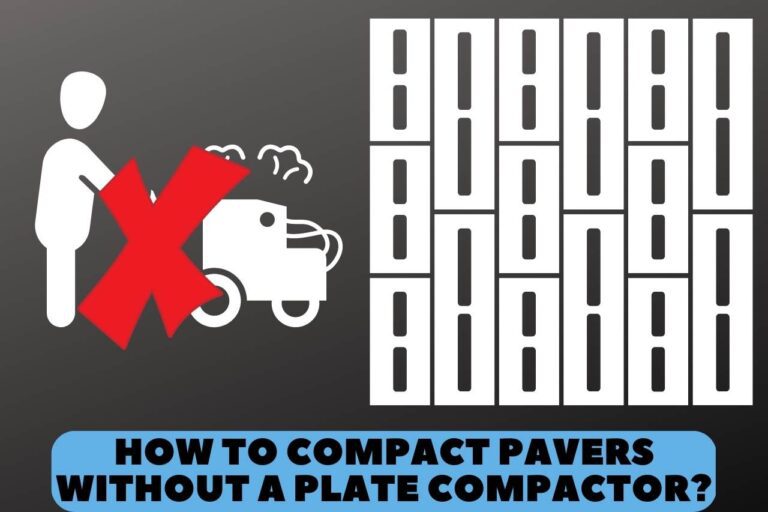How to Lay Travertine Pavers? [Guide To Install]
Travertine pavers are widely recognized to be incredibly sturdy, long-lasting, and gorgeous. Because of all these qualities, they are a highly common option for patios, pathways, garages, and particularly poolside floors. Travertine pavers have several advantages, particularly compared to other paving slabs, because they are durable and don’t deteriorate over age. Travertine pavers may be laid in various methods that most individuals are unaware of. Across all applications utilizing travertine pavers, it is strongly advised to dry-set application. Being able to be put dry-set, travertine pavers are simpler to deploy than the majority of other pavers. They can be quickly installed and, if needed, changed. Contrarily, Travertine Pavers are hefty and difficult to deal with. So how to lay travertine pavers? Let us find out.
What are Travertine Pavers?
Travertine is a type of natural limestone that is known for its elegance, smooth finish, and longevity. It is primarily constructed of natural stone. They may be simply mixed and combined to provide a lovely and distinctive design because they are available in a range of dimensions and patterns.
They are perfect for terraces and poolside because they were created specifically for exterior pavement. These are crafted from pristine, natural stone and produced by a number of intricate, natural processes.
For starters, it is beautiful. Although the travertine pavers are the best option for patio and pool sides, giving a simple-to-manage ground that can withstand the toughest situations, the travertine’s distinctive sturdiness makes it great flooring kitchens as well as bathrooms.
The Romans originally understood the advantages of the substance. Travertine is used to construct the Colosseum, the Marcellus Theater, and St. Peter’s Basilica.
How to Lay Travertine Pavers on Sand?
The pavers are simply placed, the seams are sanded down, and your new patio is ready for use.
Please remember, before starting anything, always seek expert assistance and double-check your local county and municipal regulations.
Make a Boundary
Set up a set of lawn markers around the border to mark the position of your patio’s boundary. Dig up the area between the flags with a shovel to depths of 6 inches and the elevation of your travertine tiles combined. For each and every 8 feet of length, slant the hole’s bottom outward from any buildings by roughly 1 inch to aid with drainage.
Prepare the Ground
Just Flatten the excavated surface. Hire a compression machine from a home renovation store or hardware rental place when required.
Apply a 2-inch thick layer of paver base—a blend of gravel and sand in different sizes—into the project’s bottom. Use a compression machine to crush the gravel, at which point add an extra 2 inches. A gravel layer of around 4 inches is created by compacting the first two layers, the second layer, and a final 1-inch coat.
Setting in Border Tiles
Put the garden boundary stones into the sand that borders the excavation’s border. Depending on the paver depth, ensure the edgers’ tips are tall sufficient to be parallel with the heads of the pavers. By laying a carpenter’s leveling over nearby bricks, you may verify the level of the edgers. Adapt your height as necessary. Just use a rubber-headed hammer to pound the pieces further into the soil or add more soil to the area around the border pieces.
Install the Pavers
Start with a side of the patio hole and work your way outward, laying the travertine pavers into the ground. Using a rubber mallet, gently push the initial paver into the sand foundation, allowing it to bury itself there by about 1/4 of an inch. Position the next paver next to the initial one, pressing it firmly into location. Work outward from that point, laying pavers in your chosen design while using the sandbed to keep them in place.
Leveling the Pavers
Using a carpenter’s level, overlap neighboring stones to discover the level of the bricks. Using the mallet to drive the bricks further into the ground, upper middle pavers onto neighboring pieces. Lift steep pavers by detaching them, filling the opening with sand, and then reinstalling the tile with a smack of the rubber hammer.
Occupy in the Gaps
Once each travertine tiles are in position, add sand to the gaps between each one. Sand should be applied to the paver top and swept with a brush across the stones to fill the gaps.
Should you Grout Travertine Pavers?
Some individuals want to maintain the appearance of their travertine pavers as comparable to nature as possible; therefore, they don’t grout them.
Yet, this presents an issue when debris accumulates in the gaps and is difficult to remove.
High-pressure washing will assist with cleaning the gaps to a certain extent; however, some material will still be there. The pores will draw fungus and mold because limestone is a natural substance.
Thus, people were advised to grout the whole paver and the gaps. Washing and upkeep will be much simpler if all the gaps are filled with suitable fine grout.
What is the Best Adhesive for Travertine Pavers?
The travertine pavers pair nicely with FlexBond. Other major products comprise VersaBond Flex, VersaSet, and MegaFlex, which also work well with travertine pavers.
You must take into account the kind of components you’ll be dealing with in addition to the setting in which you’ll be placing them while selecting an adhesive.
How Much Sand Do you Put Under Travertine Pavers?
The sort of land you’re laying will determine how much base you lie on the floor. Eight centimeters of the foundation will be plenty for pathways. When constructing a roadway, try to leave at least 12.5 centimeters of the foundation.
What is the Best Base for Travertine?
Employing powdered limestone is highly advised because of how well it fits in, thanks to its jagged corners. Moreover, limestone would establish a stable foundation that will enable sufficient water flow and maintain the travertine in position throughout the period.
Chopped gravel can also be added in two or three stages to the travertine base.
What Kind of Sand is Used for Travertine Pavers?
It is advised to use polymeric sand to fill the joints of the travertine pavers. Polymeric sand is coarser sand that has been treated with polymers. Its usage has become increasingly common in recent years, and it has essentially replaced silica and torpedo sand.
After installing the travertine pavers, gently use a brush to push Polymeric sand into the gaps. If necessary, perform this brushing procedure twice to ensure that polymeric dust has been placed in all gaps, crevices, and splits. After that, ensure no sand remains on the stones’ layer. Using a blower to remove any remaining material from the top is advised.
You May Also Like






